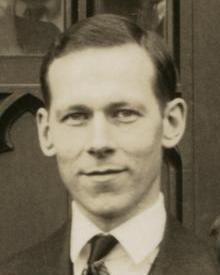
Robert Sanderson Mulliken was an American physicist and chemist, primarily responsible for the early development of molecular orbital theory, i.e. the elaboration of the molecular orbital method of computing the structure of molecules. Mulliken received the Nobel Prize in Chemistry in 1966 and the Priestley Medal in 1983.
John Michael Ziman was a British-born New Zealand physicist and humanist who worked in the area of condensed matter physics. He was a spokesman for science, as well as a teacher and author.
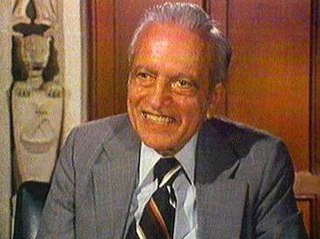
Banesh Hoffmann was a British mathematician and physicist known for his association with Albert Einstein.
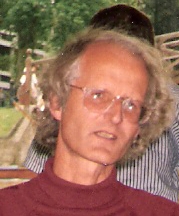
Sjur Refsdal was a Norwegian astrophysicist, born in Oslo. He is best known for his pioneer work on gravitational lensing, including the Chang-Refsdal lens.
This timeline of the history of the scientific method shows an overview of the development of the scientific method up to the present time. For a detailed account, see History of the scientific method.
In philosophy of science, strong inference is a model of scientific inquiry that emphasizes the need for alternative hypotheses, rather than a single hypothesis to avoid confirmation bias.

David S. Eisenberg is an American biochemist and biophysicist best known for his contributions to structural biology and computational molecular biology, a professor at the University of California, Los Angeles since the early 1970s and director of the UCLA-DOE Institute for Genomics & Proteomics since the early 1990s, as well as a member of the California NanoSystems Institute (CNSI) at UCLA.

John Kuriyan is the Dean of Basic Sciences and a Professor of Biochemistry at Vanderbilt University School of Medicine. He was formerly the Chancellor's Professor at the University of California, Berkeley in the departments of Molecular and Cell Biology (MCB) and Chemistry, a Faculty Scientist in Berkeley Lab's Physical Biosciences Division, and a Howard Hughes Medical Institute investigator. He is a member of the National Academy of Sciences and he has also been on the Life Sciences jury for the Infosys Prize in 2009, 2019 and 2020.
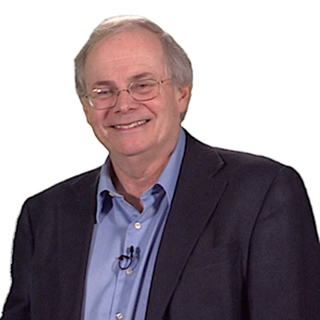
Gregory A. Petsko is an American biochemist and member of the National Academy of Sciences, the National Academy of Medicine, the American Academy of Arts and Sciences, and the American Philosophical Society. He is currently Professor of Neurology at the Ann Romney Center for Neurologic Diseases at Harvard Medical School and Brigham and Women's Hospital. He formerly had an endowed professorship in Neurology and Neuroscience at Weill Cornell Medical College and is still an adjunct professor of Biomedical Engineering at Cornell University, and is also the Gyula and Katica Tauber Professor, Emeritus, in biochemistry and chemistry at Brandeis University.
James D. Hays is a professor of Earth and environmental sciences at Columbia University's Lamont–Doherty Earth Observatory. Hays founded and led the CLIMAP project, which collected sea floor sediment data to study surface sea temperatures and paleoclimatological conditions 18,000 years ago.
Hard science and soft science are colloquial terms used to compare scientific fields on the basis of perceived methodological rigor, exactitude, and objectivity. In general, the formal sciences and natural sciences are considered hard science, whereas the social sciences and other sciences are described as soft science.

The Vine–Matthews–Morley hypothesis, also known as the Morley–Vine–Matthews hypothesis, was the first key scientific test of the seafloor spreading theory of continental drift and plate tectonics. Its key impact was that it allowed the rates of plate motions at mid-ocean ridges to be computed. It states that the Earth's oceanic crust acts as a recorder of reversals in the geomagnetic field direction as seafloor spreading takes place.

Ann Martin Graybiel is an Institute Professor and a faculty member in the Department of Brain and Cognitive Sciences at the Massachusetts Institute of Technology. She is also an investigator at the McGovern Institute for Brain Research. She is an expert on the basal ganglia and the neurophysiology of habit formation, implicit learning, and her work is relevant to Parkinson's disease, Huntington's disease, obsessive–compulsive disorder, substance abuse and other disorders that affect the basal ganglia.
Allan C. Spradling is an American scientist and principal investigator at the Carnegie Institution for Science and the Howard Hughes Medical Institute who studies egg development in the model organism, Drosophila melanogaster, a fruit fly. He is considered a leading researcher in the developmental genetics of the fruit fly egg and has developed a number of techniques in his career that have led to greater understanding of fruit fly genetics including contributions to sequencing its genome. He is also an adjunct professor at Johns Hopkins University and at the Johns Hopkins University School of Medicine.
James William Schopf is an American paleobiologist and professor of earth sciences at the University of California Los Angeles. He is also Director of the Center for the Study of Evolution and the Origin of Life, and a member of the Department of Earth and Space Sciences, the Institute of Geophysics and Planetary Physics, and the Molecular Biology Institute at UCLA. He is most well known for his study of Precambrian prokaryotic life in Australia's Apex chert. Schopf has published extensively in the peer reviewed literature about the origins of life on Earth. He is the first to discover Precambrian microfossils in stromatolitic sediments of Australia (1965), South Africa (1966), Russia (1977), India (1978), and China (1984). He served as NASA's principal investigator of lunar samples during 1969–1974.

King-Wai Yau is a Chinese-born American neuroscientist and Professor of Neuroscience at Johns Hopkins University School of Medicine in Baltimore, Maryland.
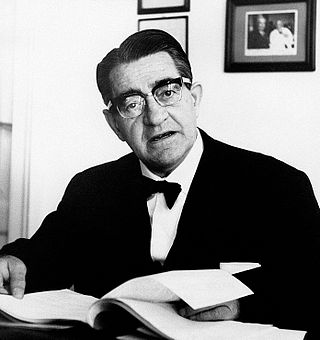
Carlo Arnaudi was an Italian microbiologist and socialist politician, who served as the first minister for science of Italy and was one of the members of the Italian Senate. He is also known for his studies in the field of microbiology which produced the discovery of certain steroid-conversion processes in microorganisms.

Miles John Padgett is a Royal Society Research Professor of Optics in the School of Physics and Astronomy at the University of Glasgow. He has held the Kelvin Chair of Natural Philosophy since 2011 and served as Vice Principal for research at Glasgow from 2014 to 2020.
William Li is a Canadian biological oceanographer who did research on marine picoplankton, marine macroecology, ocean surveys of plankton from measurements of flow cytometry, and detection of multi-annual ecological change in marine phytoplankton.
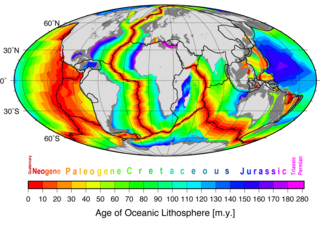
Marine geophysics is the scientific discipline that employs methods of geophysics to study the world's ocean basins and continental margins, particularly the solid earth beneath the ocean. It shares objectives with marine geology, which uses sedimentological, paleontological, and geochemical methods. Marine geophysical data analyses led to the theories of seafloor spreading and plate tectonics.











